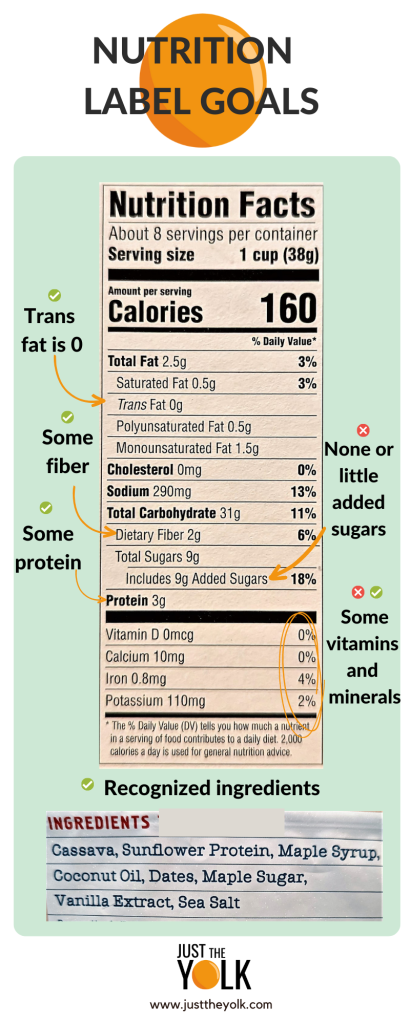This was inspired by a post from Cleveland Clinic
The Yolk
- Daily value based on 2,000 calories a day (you may be more or less)
- Components of the nutrition label
- Serving size
- The entire label is based off on one serving size
- The total servings in package will be listed as well
- Calories
- How many calories in just one serving size, not the whole package
- Total fat
- Saturated fat – how much of the total fat is saturated
- Trans fat – how much of the total fat is trans
- Cholesterol
- Sodium
- Carbohydrates
- Fiber – how much of the total carbs are fiber, may include the following:
- Soluble fiber
- Slows digestion and blood glucose response
- Insoluble fiber
- Makes digestion easier – think vegetables
- Sugar – how much of the total carbs are sugar
- Some sugar may be naturally occurring, such as dried fruit
- Added sugars
- Any additional sugars not already in the food – check the ingredients to see which kind of sugar
- Protein
- Vitamins & Minerals
- Percentages on the right side only based on the recommended intakes for 2,000 calories
Perspective
- The ingredient label is equally, if not more, important than the nutritional facts
- Take all the components of the label into account when choosing a packaged food
- Don’t let it stress you out – try your best to choose what’s best for you
- And if the food doesn’t come with a label, it’s probably a good choice
- Examples of poor packaged food choices:
- Long list of ingredients
- Fiber and protein content is zero
- Added sugars are in the double digits
- Trans fat greater than zero
- Sodium is a three digit number
Resources


